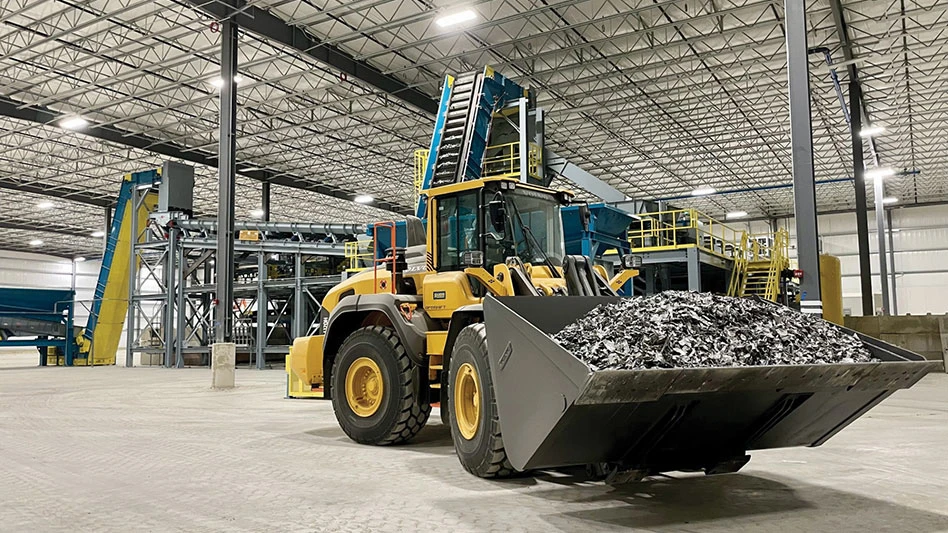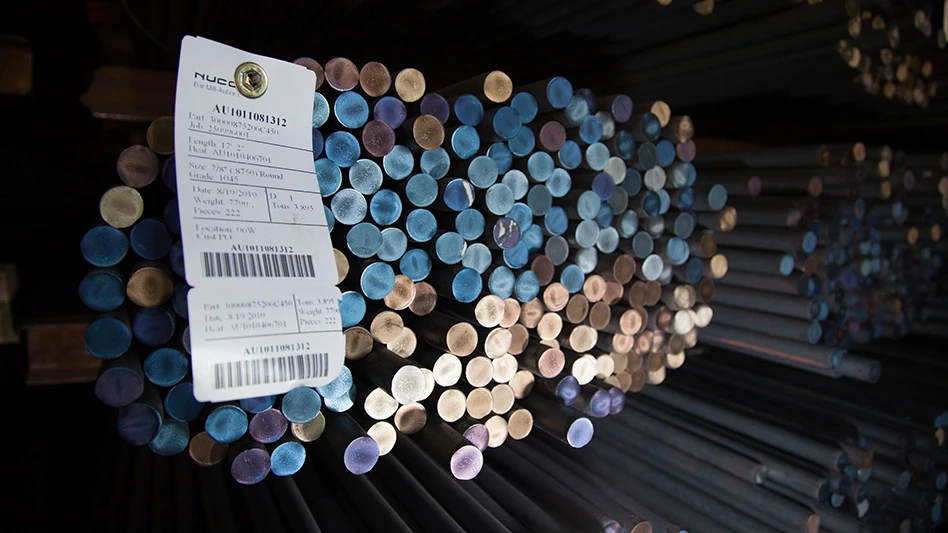FROM RUSSIA, WITH DISCOUNTS
The condition of economies in East Asia has received a lot of attention during the scrap market’s woes of the past year and a half. But in the ferrous scrap market, activity in Asia has not been the only factor drawing attention.
The past two years have witnessed an acceleration in the apparent dismantling of the former Soviet Union, from its military compounds to its outdated and inefficient industrial infrastructure. It may not always be easy for Western observers to determine just what all the obsolete scrap metal flowing out of Russia and the Ukraine used to be, but clearly entire buildings and complexes from the Soviet era are being dismantled and sold off to the West as a source of income.
Gary Schnitzer, executive vice president of Schnitzer Steel Products, Oakland, Calif., says his company continues to be affected by the inflow of Russian scrap. “The competition from Russia has been phenomenal,” he told attendees at the ISRI Mega Roundtables. He noted that last year, Russia sent some nine million tons of ferrous scrap into the U.S., while this year another five million tons is expected to arrive.
Detlef Mueller, president of U.S. Ferrous Trading Inc., Greenwich, Conn., also remarked upon the flow of Russian scrap. He noted that his company arranges for scrap exporting from two East Coast sites, but that “there has been very little these days, unfortunately.”
Referring to exports from the Black Sea region, Mueller commented that “what we saw this year was remarkable—a 15% tax on Russian exports, but the volume went up and prices went down,” as far as exports of scrap at the beginning of the year. Mueller added that, “a lot of these taxes initially were not paid,” as shippers and customs agents claimed that taxation documents were not yet available.
Russian scrap exporters will continue to ship from Ukrainian ports, Mueller predicted, and are also shipping from Finnish ports as a means of keeping material moving out of Russia.
EXPECT MORE POLE SCRAP
If an effort by the American Iron and Steel Institute (AISI), Washington, is successful, then ferrous scrap dealers will eventually see more scrap arriving in the form of steel utility poles.
AISI is communicating directly with electric utility companies, engineering firms and other potential customers of steel utility distribution poles as an alternative to wood poles. According to AISI, “the steel utility distribution pole market represents tremendous growth potential for North American steel.”
Some of that potential is being realized, as the sale of such steel poles doubled from 1997 to 1998. In the last two years, more than 75,000 steel poles have been ordered, according to AISI. The room for growth is tremendous, however, since electric utility companies typically order some four million wood poles each year.
STEEL PRODUCTION RISES IN ASIA
Crude steel production remains down year-to-date in many countries compared to 1998, although the trend may be reversing. Worldwide crude steel production for both July and August showed gains versus the same month one year ago.
In July, a 1.3% increase to 64 million metric tons was reported by the International Iron and Steel Institute (IISI), Brussels. Much of the growth in production took place in the Middle East and in Southeast Asia.
Perhaps most encouraging, production in Asia rose by 7% versus July of last year. Economists are hopeful that the increase in steel production is a sign that economies in East Asia that were sent reeling in late 1997 are beginning their return to a more healthy state.
European Union countries remained below 1998 output at 12.3 million tons. Production in Germany and Italy continued to remain down from last year, although steel production in France was slightly up by .7%. Production in North America continued to fall below 1998 levels, with 10.5 million metric tons produced this July compared to 10.7 million metric tons in July of 1998.
While output in many countries continues to be down for the same time period last year, in the Middle East production rose by 27% in July.
August numbers showed a 2.7% gain, globally, over August of 1998. Korea and Japan again showed increases against their year-ago figures, while U.S. production was down 2.2%.

Explore the October 1999 Issue
Check out more from this issue and find your next story to read.
Latest from Recycling Today
- Indiana county awarded $65K recycling grant
- Mixed paper, OCC prices end year on downward trend
- Updated: CAA submits final draft program plan in Oregon
- Enviri names new president of Harsco Environmental business
- Survey outlines ‘monumental challenge’ of plastic packaging collection in UK
- Nippon Steel acknowledges delay in US Steel acquisition attempt
- BASF collaborates to study mechanical plastic recycling
- Commentary: navigating shipping regulations for end-of-life and damaged batteries





